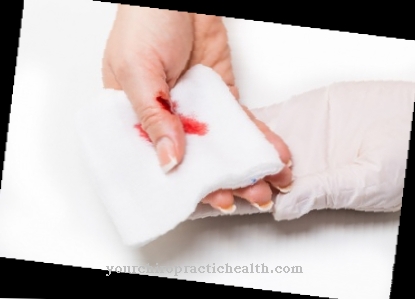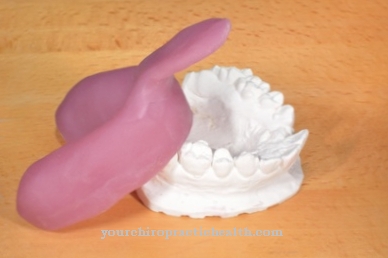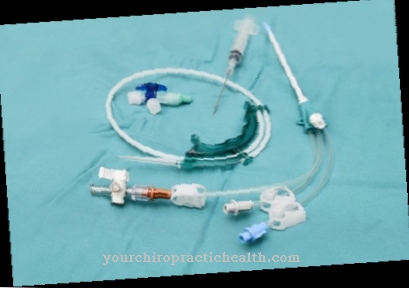Orthopedic insoles can be necessary for foot problems at any age. Much of what is advertised as orthopedic insoles in the trade is not very useful standard insoles. Orthopedic insoles are individually manufactured by the orthopedic shoemaker according to the appropriate medical indication and after taking a footprint - usually using a foam print, 3-D scanner or blue print. The extent to which insoles for sale have an orthopedic value is assessed very differently. But there are shoe manufacturers who offer orthopedic footbeds of good quality. These footbeds incorporated into the shoe are useful as an aid against fatigue and misalignment. But they do not replace real orthopedic shoes.
What are orthopedic insoles?

Orthopedic insoles are used to properly bed the overloaded or sick foot. They should optimally support and relieve him and, if necessary, ensure a correction of misalignments.
A definition for orthopedic insoles describes the tailor-made production and supply of the foot with an aid worn in the shoe by a trained specialist in orthopedic technology.
Orthopedic insoles are used to properly bed the overloaded or sick foot. They should optimally support and relieve him and, if necessary, ensure a correction of malpositions, leg length differences or diseases of the foot. Orthopedic insoles are used for symptom-free walking.
Shapes, types & types
A distinction is made between different forms, types and types, depending on the indication orthopedic insoles. Orthopedic insoles can be individually adjusted for congenital or lifelong malpositions, deformities and defects, as well as amputations in the toe area.
The orthopedic insoles compensate for various foot problems. They must be provided with appropriate equipment. In the case of toe misalignments, foot malpositions or amputations on the foot, commercially available footbeds or orthopedic insoles are not indicated. Made-to-measure orthopedic insoles are also adapted for pain in the foot, after trauma caused by an accident, inflammation in the joint or toe area, with degenerative symptoms on the foot, with circulatory disorders or foot syndromes such as diabetic or rheumatic changes in the foot.
To compensate for leg length differences, for example after a femoral neck fracture, orthopedic insoles have to compensate for the resulting height difference. Adjustments on the shoe that are aligned with the orthopedic insoles can be useful additions. The material for orthopedic insoles ranges from inflexible cast resin or metal to flexible and cushioning materials such as cork, leather or soft foam.
A distinction is made between orthopedic insoles, footbed insoles, hard shell insoles, pure heel shells, insoles with corrective jaws, shock absorbers, spherical insoles according to Spitzy, 3-point insoles, orthopedic insoles to compensate for shortening and orthopedic insoles with proprioceptive bedding according to Hilton.
Structure, function & mode of operation
They also differ in structure and functionality orthopedic insoles, depending on whether you want to relieve or support, correct congenital or acquired deformities or pressure points, or stimulate blood circulation.
A supporting transverse arching, which is typically indicated in a splayfoot, requires different orthopedic adjustments than a supporting longitudinal arching in the case of pronounced flat feet. A recessed longitudinal arch is necessary if a heel spur is present. Corrective orthopedic insoles are indicated, for example, as 3-point insoles for a congenital sickle or clubfoot. Different leg lengths can be compensated for with raised heels and orthopedic insoles tailored to the foot.
Proprioceptive bedding according to Hilton are custom-made. They have a stimulating effect on circulatory disorders or signs of fatigue. In principle, orthopedic insoles consist of a sole-like construction that is sensibly set up for a specific shoe. This must have a replaceable footbed. Normal standard insoles consist of a bedding insert and are covered with different cover materials. Higher quality orthopedic insoles can have rigidus fields for the treatment of hallux valgus.
Diabetic insoles are special orthopedic insoles that work on the sandwich principle against the dangerous pressure points that make up the diabetic foot. Orthopedic insoles can also be equipped with toe rests, cushion pads, heel spur pads and the like.
Avoidance & health benefits
The medical and health benefits of orthopedic insoles The main thing is that the person concerned can walk again without pain.
Most people today have foot problems because our feet are actually made to go barefoot. Instead, we squeeze them into ill-fitting, too narrow, or too wide shoes. Orthopedic insoles compensate for deformed toes, pressure points, misaligned feet or joint damage.
The diabetic foot is a special case for orthopedic insoles. Diabetics do not notice pressure points and constrictions. Healthy feet do not need orthopedic insoles, but sick ones do.

























.jpg)


